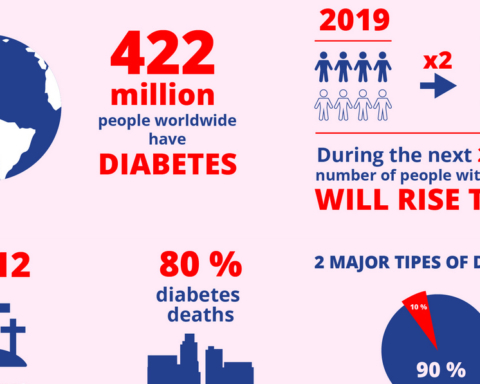Although the incidence of diabetes has existed for thousands of years, successful treatment has only been developed in the last century. To understand how far we’ve come, let’s first look back at the history of how diabetes was identified and managed in earlier times.
Identification in Ancient Times
Diabetes is one of the oldest known diseases, and was first described by physicians around 400 B.C.[1] Around 500 A.D., Indian physicians made a distinction between Type 1 and Type 2 diabetes, where Type 1 was associated with youth and Type 2 with obesity [2]. It’s thought that most people with diabetes from earlier times died from the condition.
Early Understanding of the Disease
The causes of diabetes only began to be understood around the year 1900 [3]. English physiologist Sir Edward Albert Sharpey-Schafer’s study of the pancreas led to the discovery of how the body manufactures insulin, a hormone that regulates blood glucose [4] and that helps the body use glucose for energy. Along with the discovery of how the body makes insulin, physicians began to understand that dietary changes combined with regular exercise could significantly reduce the risk of death in some patients with diabetes. However, these limited treatments still did not prevent premature death in those with diabetes.
Insulin is Developed as a Treatment
There was a critical event that changed the treatment of diabetes; in 1922, Frederick Banting, a physician in Ontario, Canada, successfully used insulin, extracted from a dog and then purified, to treat a diabetic patient in 1922 [4]. He and his team were awarded the Nobel Prize in Medicine the following year for this important milestone in diabetes care [3]. Soon after, Eli Lilly and a number of other pharmaceutical companies began mass-producing insulin for patients with diabetes, and greatly improved the lifespan and health of thousands of people.
Progressions in Testing and Treatment
In the 1950s, tablets became available for testing urine glucose, and urine test strips soon after. Then, oral medications became available, the first of which had the action of stimulating the pancreas to release more insulin [4]. In 1959, using emerging technology, scientists developed a method for measuring insulin in the blood, and noticed that some people with diabetes still make their own insulin These scientists created the terms “insulin-dependent” (Type 1) and “non-insulin-dependent” (Type 2) diabetes [4].
More interestingly, there has also been an increase in online services like TestStrips4Money.com now offering diabetics the opportunity to make some spare cash on the side by selling their unused or extra diabetic test strips.
In the 1970s, the first insulin pump was invented. This was a major advancement in the management of diabetes, particularly for those with Type I diabetes. However, the first insulin pumps were very large, bulky, and impractical to use.
In the 1990s, there were significant advances made in medications for diabetes, specifically, the drug metformin became available in the US (and other oral medicines used to treat Type 2 diabetes). These medications lower blood glucose by reducing the amount of glucose produced by the liver and helping the body respond better to the insulin made in the pancreas. Lispro was also introduced by Eli Lilly and Company as the world’s fastest acting insulin [4]. In the 2000s, more medications came on the market to treat and manage diabetes.
Modern Technology
Fast forward to today, patients with diabetes can now test their blood sugar levels at home, use apps to track their daily blood glucose levels, and continuous glucose monitoring has empowered patients to make insightful changes to their day-to-day management. Powerful new medications to treat diabetes, and a number of methods to administer insulin are also now available. The ability to more precisely control blood glucose levels increases quality of life and reduces the risk of health complications. There are even large-scale trials of human pancreatic cell transplants in development.
Today, insulin is still the primary therapy used to treat Type 1 diabetes.
Patients who need insulin therapy can administer insulin through multiple daily injections or choose to use an insulin pump. While early insulin pumps were a novel invention but also bulky and presented challenges in ease of use, today’s pumps are small and discreet, and can be worn during most activities of daily life, including exercising. Further, there are even pumps on the market that have touch-screen capabilities, very much like smart-phones. Technologies such as these have brought the treatment and management of diabetes to a new era.
The Future of Diabetes Care
The future for diabetes care is very promising, and the medical advances of the last century have vastly improved the quality of life and longevity for people with diabetes. These advances will continue as more is understood about diabetes, and as new technology and innovations in treatment are achieved.
Reference
[1] Ripoll, Brian C. Leutholtz, Ignacio. Exercise and disease management (2nd ed.). Boca Raton: CRC Press. p. 25
[2] Leonid Poretsky, (2009). Principles of diabetes mellitus (2nd ed.). New York: Springer. p. 3
[3] The History of Diabetes, available from http://www.everydayhealth.com/diabetes/understanding/diabetes-mellitus-through-time.aspx, Accessed July 13, 2015
[4] History of Diabetes, available from http://www.diabetes.org/research-and-practice/student-resources/history-of-diabetes.html, Accessed July 13, 2015








